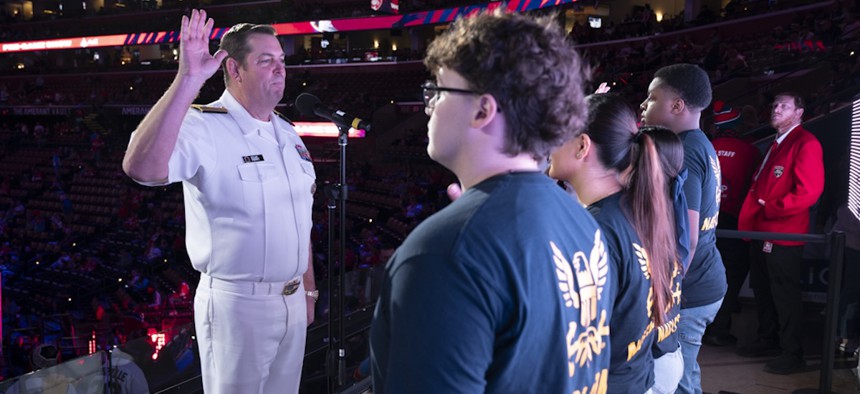
The Navy’s chief of information office is on the clock to deliver a plan that will reduce the service’s civilian public affairs staff by at least 35 percent, according to a memo signed by Navy Secretary John Phelan earlier this month.
The move would also centralize hiring for all civilian PAOs and all communications-related contracting to Department of the Navy headquarters. While the Marine Corps is not being directed to cut its civilian billets, it will be subject to the same new hiring and contracting practices.
“This initiative is essential to eliminate duplicative roles, concentrate talent on the highest priority functions, focus contracting support where it is most needed and ensure alignment with commitment to mission-driven resource management, cost savings and operational lethality,” Phelan wrote in the memo, which gives the department 45 days from its Aug. 7 signing to submit a plan.
The Navy and Marine Corps public affairs reorganization comes just weeks after the Army announced it would rebrand its central Office of the Chief of Public Affairs to the Army Global Communications Office, though cuts to force structure were not part of that announcement.
Earlier this year, the Army pushed out Brig. Gen. Amanda Azubuike, who had been serving as the chief of public affairs since June 2024. Rather than a uniformed service member, the service will soon have a political appointee helming its communications office: a fundraising consultant for North Carolina Republican campaigns named Rebecca Hodson.
Meanwhile, the Navy is about to turn over its top uniformed PAO role, held for the last three years by Rear Adm. Ryan Perry. In an email to the Navy PAO community on Thursday, Perry wrote that he would retire Oct. 1 and his deputy, Rear Adm. John Robinson, would step in until the service convenes a selection board for a permanent replacement.
The Navy’s reorganization comes from a January review that found that the department “lacks a centralized communications strategy, resulting in individual commands and offices developing messaging without incorporating broader priorities,” Phelan wrote in the memo.
Further, he continues, public affairs strategies haven’t been “validated” and thus result in redundancies and “inefficient use of taxpayer funds.”
There are about 400 civilian PAOs working for the Navy, according to the service’s human resources website. The memo does not give detailed guidance on how cuts should be decided, only that cuts should focus on eliminating redundancies, should consider swapping in a uniformed PAO if possible, and each retained job will require a justification of its “mission-critical requirements.”
Slashing Defense Department civilian jobs has been a key feature of the second Trump administration, going back to Defense Secretary Pete Hegseth’s directive in February to reduce their numbers by 5 to 8 percent, alongside a hiring freeze that rescinded existing job offers.
That would add up to more than 60,000 of the 770,000 civilians who worked for DOD at the beginning of this year. Though some have left voluntarily through buyouts and early retirement offers, the Pentagon has refused to say exactly how many members of its workforce it has shed so far.
The post Navy to cut at least a third of its civilian public affairs force appeared first on Defense One.




